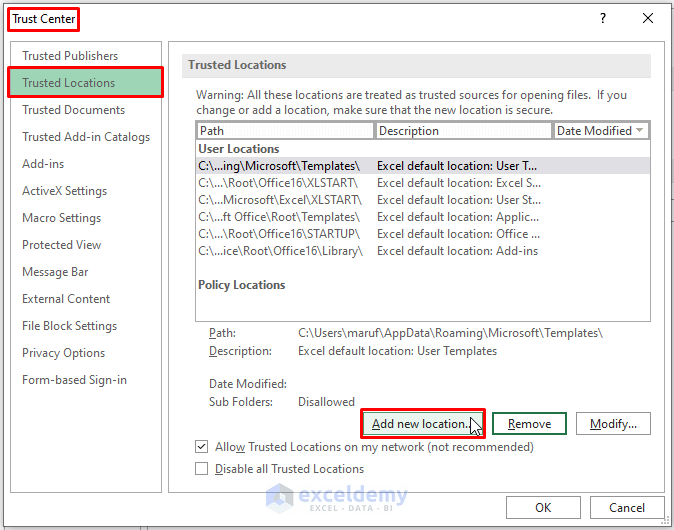5 Ways to Edit a Protected Excel Sheet Easily

Have you ever tried to modify an Excel worksheet only to find that it's locked or protected? Many Excel users encounter this problem when working on files created by others or when dealing with proprietary data. Protecting an Excel worksheet is a common way to prevent accidental changes or intentional tampering, but what if you need to make alterations for legitimate reasons? In this comprehensive guide, we'll explore five reliable methods to edit a protected Excel sheet with ease, ensuring that your workflow remains uninterrupted.
Method 1: Password Recovery

If the worksheet is password-protected, your first option is to recover the password. Here’s how you can attempt this:
- Try Common Passwords: Sometimes, the password might be as simple as “password” or the name of the company. Use common passwords you can think of.
- Third-Party Tools: Use software like PassFab for Excel, which can retrieve passwords in moments. Here’s how:
- Download and install PassFab for Excel.
- Open the software and select the file you want to unlock.
- Click on “Start” and let the program work its magic.
- Online Services: There are online tools available which can also help recover the password. However, this should be a last resort due to potential security risks.
📌 Note: Be cautious when using third-party software or online services. Ensure they are reputable and secure to avoid potential data leaks or malware.
Method 2: VBA Code

If you’re not afraid of some coding, VBA (Visual Basic for Applications) can be your friend. Here’s a simple VBA script to unlock your sheet:
Sub UnprotectSheet()
|

Steps to use this code:
- Open Excel and press Alt + F11 to open the VBA editor.
- Insert a new module by clicking “Insert” > “Module”.
- Paste the above code into the module.
- Close the VBA editor and run the macro by clicking “Developer” > “Macros” > “UnprotectSheet”.
Method 3: Save As New

If password recovery isn’t an option, you can save the sheet as a new, unprotected Excel file:
- Open your protected workbook.
- Go to “File” > “Save As”.
- Choose a new name and location, then select “Excel Workbook” format.
- Save. Excel will create a new, unprotected workbook, allowing you to edit freely.
Method 4: External Links

Another indirect way to edit a protected sheet is by linking external cells:
- Create a new worksheet or workbook.
- In the new sheet, link to the cells in the protected worksheet using formulas like “=Sheet1!A1” where “Sheet1” is the protected sheet.
- Edit the linked cells in your new workbook; the changes will reflect in the original sheet.
🔎 Note: This method might not work if the cells in the protected sheet are locked for editing.
Method 5: Sheet Protection Overwrite

If the protection is weak, you might be able to:
- Insert a new sheet into the workbook.
- Copy all the data from the protected sheet into the new sheet.
- Delete the original protected sheet and rename the new one to match the original.
This approach bypasses the protection by recreating the data structure, but it's not always feasible if the worksheet contains complex formulas or data validation.
In summary, we've covered several techniques for editing protected Excel sheets, from straightforward password recovery to using VBA and indirect methods like linking external cells. Each method has its use case, ensuring that you can access and edit protected sheets in various scenarios. Whether you're a student, a business professional, or just someone who often works with spreadsheets, knowing these techniques can save time and frustration. Remember to always respect the original protections for security and integrity, using these methods judiciously.
Is it legal to edit a protected Excel sheet?

+
Editing a protected Excel sheet isn’t inherently illegal, but it depends on the context. If you have legitimate access and rights, it’s legal. However, unauthorized access or modification of data owned by someone else can infringe on copyrights or data protection laws.
Can I recover the password without third-party tools?

+
While possible, recovering an Excel password without specialized tools is challenging. You might try using dictionary attacks or brute force, but these methods are often impractical or time-consuming.
What should I do if I forget the password to a sheet I own?

+
If you forget the password to a worksheet you created, you can use methods like password recovery tools or VBA to bypass the protection. However, the best practice is to keep a record of all passwords or use a password manager.
Are there any risks involved in using third-party tools to unlock Excel sheets?

+
Yes, there are risks. Software or online tools might contain malware, or your data could be compromised if the service isn’t secure. Always research the reputation of the tools you use and avoid inputting sensitive data online.



